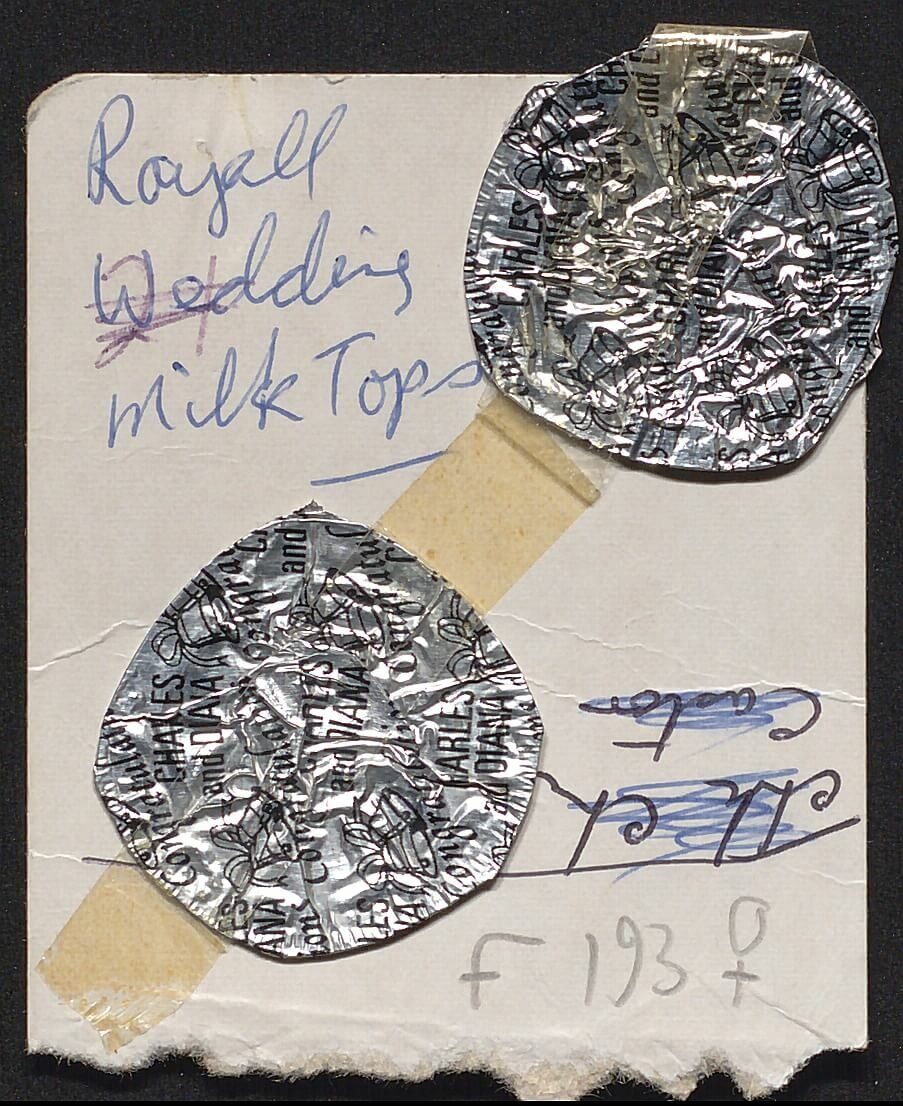‘Celebration or bore’: Mass observers react to the wedding of Charles and Diana
Inspired by the recent news of the wedding of Princess Beatrice to Edoardo Mapelli Mozzi, I decided to dig into the newly published Mass Observation Project, to see what the mass observers of the 1980s had to say about another famous royal wedding, that of Prince Charles to Diana Spencer.
In a special directive sent out titled ‘Royal Wedding – Celebration or Bore?’ the panel of observers for MO were asked to document how they spent the day of the royal wedding ‘from getting up until bedtime.’ The request garnered emotive responses, both positive and negative.
The link between Mass Observation and gauging opinion on the royal family can be traced clearly, not least because the timing of the revival of Mass Observation as the Mass Observation Project was in part inspired by the media frenzy surrounding the royal wedding of Charles and Diana, which took place in the same year.
Historian Stephen Brooke has noted in his essay for the resource that the founders of the new MO ‘saw the marriage of Prince Charles and Diana Spencer as the opportune occasion to relaunch Mass Observation’ and that at the start of the decade, ‘the new Mass Observation Project was ideally positioned to take the temperature of a tumultuous period.’

1981 Royal wedding special directive, © Mass Observation Archive Trustees. Further reproduction is prohibited without permission.
One particularly enthusiastic observer, K312, describes travelling to London to watch the proceedings: ‘I got up at 8 am & caught the 8:58 am train to Charing Cross (it was only 60p: not much, I thought to witness history- I love the thought of telling children that I went to see the wedding […] I’d even bought the ticket the night before, like an eager schoolgirl!’
Other keen respondents submitted commemorative objects from the day, ranging from party hats from street parties, commemorative pork pie wrappers and even royal wedding-themed milk bottle tops, leading observer B1565, to comment that ‘everything was plastered in Charles and Di.’

Royal wedding milk bottle tops from F193’s response to the 1981 Royal wedding special directive. © Mass Observation Archive Trustees. Further reproduction is prohibited without permission.
Many of the responses also focus on the television coverage of the wedding, with B89 commenting that ‘On the wedding day everyone I know seemed to be glued to their TV’ and revealing that they ‘travelled especially’ to their mother’s house ‘to watch the wedding on her colour TV’.
Elsewhere, observer C149 notes that ‘some 700 million people were watching the wedding’, well over double the number that had tuned in to watch the wedding of Princess Margaret to Antony Armstrong-Jones, the first royal wedding to be broadcast live, some twenty years prior.
Whilst throughout the responses there is a common sense that royal wedding fever was inescapable, some observers like J288 were less complimentary, pointing out that ‘the main criticism was the money spent on the occasion. No one believed that the Royal Family were paying for it themselves!’

M387's response to the 1981 Royal wedding special directive. © Mass Observation Archive Trustees. Further reproduction is prohibited without permission.
However, despite some critical responses there appeared to be a general sense that the wedding, (at least temporarily), lifted the mood in Britain, with one self-described anti-monarchist, G234, writing: ‘Somehow the wedding served to throw a ray of hope on a society despairing of the rising crime rate and sporadic mindless rioting and looting which has had the nation wringing its hands in anxious dread for the future.’
These polarised reactions to the royal wedding are revealing in that they can be used to gather an unfiltered sense of public feeling towards both the monarchy and wider social issues, as the event encouraged vocal responses from those on both sides of the argument.
This is but one example of just how invaluable the Mass Observation Project can be in providing qualitative social data which can be used to gauge the mood in Britain at any given moment, through the responses of ordinary people to current events and technological changes, in real-time as they unfolded around them.
About the collection
Mass Observation Project is out now.
Recent posts

The blog highlights American Committee on Africa, module II's rich documentation of anti-apartheid activism, focusing on the National Peace Accord, global solidarity, and student-led divestment campaigns. It explores the pivotal role of universities, protests, and public education in pressuring institutions to divest from apartheid, shaping global attitudes toward social justice and reform.

This blog examines how primary sources can be used to trace the impact of young voices on society, particularly during pivotal voting reforms in the UK and the US. Explore materials that reveal insights into youth activism, intergenerational gaps, and societal perceptions, highlighting their interdisciplinary value for studying youth culture, activism, and girlhood across history.
